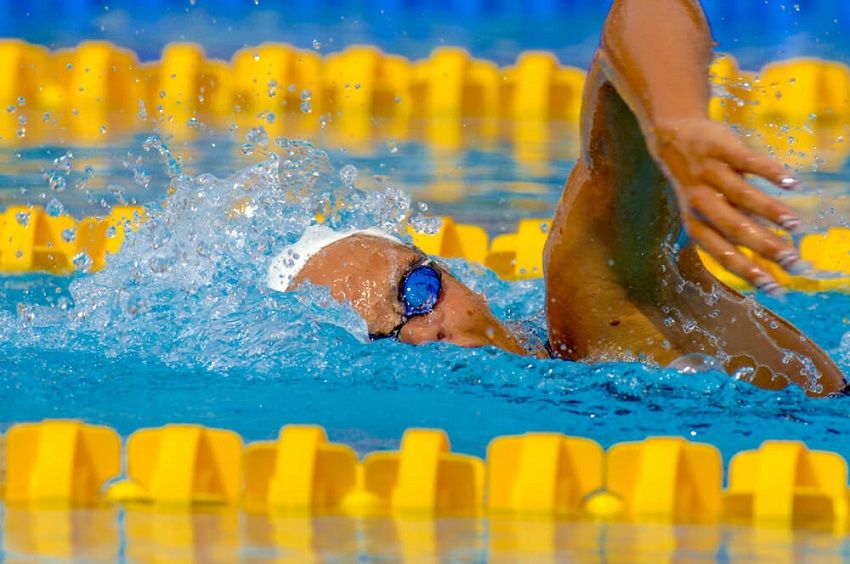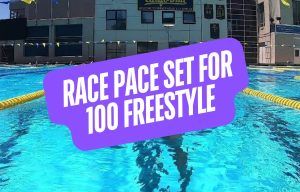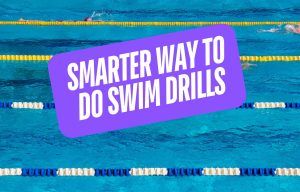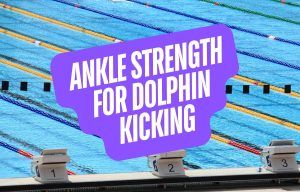Protect your shoulders and you will be prepared to tackle hard sets and improve in the water. Here are three mobility exercises for bulletproofing your shoulders.
It’s an almost unavoidable reality of swimming.
At some point, after some random swim practice or after a grueling stretch of workouts, it happens.
A ping, a tinge, an ache, or an outright band of screaming ouchies coming from your shoulder.
And you would be far from alone:
- When USA Swimming national team members were surveyed, 26% of them were experiencing shoulder pain quite literally when they were being surveyed.
- Another survey, this time of collegiate and Masters swimmers, showed that 47% of the college swimmers had experienced shoulder pain lasting three weeks or longer. The Masters swimmers, despite not swimming as much, weren’t immune either, with 48% of them reporting shoulder ouchies.
The reasons for swimmer’s shoulder are varied.
Muscle fatigue, overuse, training with equipment (paddles and kickboards were oft-cited culprits of making shoulder pain worse), muscle imbalances, swimming with bad technique, and poor posture.
See also: 5 Epic Upper Body Dynamic Stretches
In this guide to mobility exercises for swimmer’s shoulder, one of my buddies, a former national level and NCAA division 1 swimmer, Alex McLaren PT, FRCms, FRA, stops by to share his favorite exercises for training the shoulder for the rigors of training.
Since hanging up his tech suit, Alex is now a Strength and Mobility Coach for high-level athletes living in Edinburgh, Scotland.
Alex breaks down three stretches/mobility exercises that swimmers can use to protect their shoulders and increase range of motion.
Take it away, Alex:
1. Active Sleeper Shoulder Stretch (Internal Rotation)
Stretching has a time and a place, but it doesn’t prepare your tissue for load because it is passive (doesn’t require any strength), rather than active (requires strength). Unprepared and undertrained tissue is more susceptible to injury.
The Injury Equation: Load > Capacity = Injury
Translation: if your shoulder trains harder than your shoulder has the capacity for, you get injured.
Solution?
Train and prepare your shoulder, particularly in weaker areas.
2. Shoulder (Glenohumeral) Joint End-Range-Hovers
Most often when we strength train, we fail to train our joints and muscles at their “End Ranges.”
This is often why, over time, we begin to feel tighter and move with more limitation, AKA sloppy tight-lat streamlines.
We’ve all seen our fair share of them!
3. CARs (Controlled Articular Rotations)
Neck, Scaps, Shoulders and Lumbar/Thoracic Spine.
Developing an ACTIVE mobility (not flexibility) routine through daily CARs, is by far the best way to become less of a slave to foam rolling and lacrosse balls, and instead become a more intelligent and efficient athlete.
Benefits include, enhanced neuromuscular control (mind/body connection), better blood flow to articular surfaces of joints, connective tissue and muscle, better active (usable) range of motion, faster recovery, and decreased likelihood of injury. Oh and also, feeling awesome with fewer aches and pains!
Alex McLaren, PT, FRCms, FRA is a former Canadian National Finalist, Elite Swim Coach and is now a Strength and Mobility Coach for high-level athletes living in Edinburgh, Scotland. You can find him online here, where he provides training services through his training company, Athlete Always.
More Stuff Like This:
How to Finally Fix and Prevent Swimmer’s Shoulder. Fed up with being sidelined by swimmer’s shoulder? Here’s your ultimate guide to fixing and preventing shoulder injuries from swimming.
Scapular Stability for Swimmers: How to Bulletproof Your Shoulders. Strong scaps, strong swimmer. Here’s how better scapular stability will help you swim faster and avoid injury.














